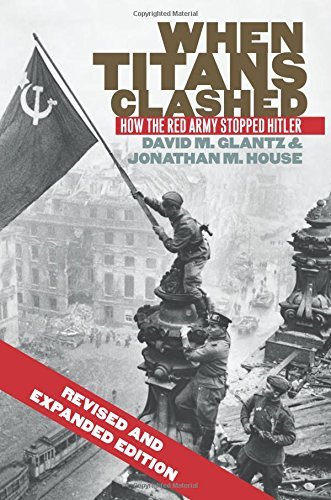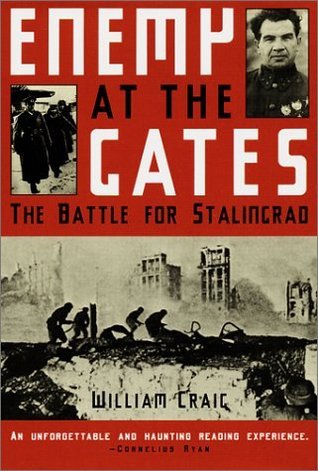
When Titans Clashed: How the Red Army Stopped Hitler
Book Description
When the destiny of nations hung in the balance, one army rose to confront the relentless might of Hitler's war machine. "When Titans Clashed" unveils the gripping saga of the Red Army's fierce resolve and brutal tactics that defied the odds on the Eastern Front. With every battle, they proved that courage and sacrifice reshape history's narrative. As the tides turned and the stakes escalated, alliances forged in the fire of combat became crucial to survival. What extraordinary strategies and unyielding spirit emerged from the ashes of devastation, ultimately changing the course of World War II?
Quick Book Summary
"When Titans Clashed: How the Red Army Stopped Hitler" by David M. Glantz provides an incisive account of the Eastern Front during World War II, focusing on the Soviet Union’s monumental struggle against Nazi Germany. Dispelling Western-centric narratives that often underplay Soviet efforts, the book reveals the immense sacrifices, bold strategic adaptations, and exhaustive resources that characterized the Red Army’s campaign. Through detailed analysis, Glantz shows how the Soviets, facing near-annihilation in 1941, not only halted the German advance but eventually mounted a massive counteroffensive, turning the tide of the war. The account highlights the crucial interplay of military leadership, industrial mobilization, and psychological resilience that allowed the Soviets to endure staggering losses and ultimately triumph. The book underscores how the Eastern Front was pivotal in determining the outcome of World War II.
Summary of Key Ideas
Table of Contents
The Red Army’s Transformation and Resilience
The Red Army faced existential danger in 1941 as Hitler’s Operation Barbarossa unfolded with stunning speed and brutality. Caught unprepared by the scale and ferocity of the German invasion, Soviet forces initially suffered devastating defeats, with entire armies encircled and millions taken prisoner. Despite overwhelming odds and enormous losses, the Soviet leadership and people responded with determination. Glantz details the rapid reorganization and mobilization efforts that began to reverse the tide. Through mass conscription, internal discipline, and the evacuation of industry eastward, the foundations for a prolonged resistance were laid even as cities fell and the enemy approached Moscow.
Strategic Shifts and Military Adaptation
The failure of initial German blitzkrieg tactics to secure a swift victory forced both sides into a grueling war of attrition. Glantz examines how Soviet commanders like Zhukov and Vasilevsky learned from early mistakes, refining operational doctrines, and embracing flexibility in planning. Soviet strategy shifted from rigid defense to deep operations—coordinated, multi-layered offensives intended to stretch and ultimately destroy German lines. These shifts were vital during key battles such as Stalingrad and Kursk, where Soviet ability to coordinate massive troop movements and exploit enemy weaknesses changed the balance of power on the front.
Impact of Logistics and Industrial Mobilization
Logistics and industrial output became the backbone of the Soviet war effort. Glantz shows how the relocation of factories beyond the Ural Mountains and the effective mobilization of both men and women in industry ensured a steady flow of armaments and supplies, even under horrendous conditions. Coordination between military planners and industrial managers allowed the Red Army to replenish its ranks and arms, eventually surpassing German production. Lend-Lease aid from Western allies, though not decisive by itself, provided crucial equipment and support at key moments.
The Cost of Sacrifice and Human Suffering
The human cost of the conflict on the Eastern Front was staggering; millions died, towns and villages were obliterated, and entire populations were uprooted. Glantz does not shy away from the brutality meted out by both the Wehrmacht and the Soviet regime, including Stalin’s ruthless methods of enforcing discipline and rooting out perceived betrayal. Yet, the narrative also highlights the immense resilience and patriotism that galvanized ordinary Soviets to continue fighting, even in the darkest months. The war’s psychological and demographic scars would define generations to come.
Turning Points and the Road to Victory
Crucial turning points—most notably the Soviet victories at Stalingrad in 1942-43 and Kursk in 1943—demonstrated the Red Army’s newfound strategic and operational strengths. From that point, Soviet forces went on the offensive, relentlessly pushing German armies westward. By war’s end, the capture of Berlin and Hitler’s defeat confirmed the Red Army as the dominant force in the European theater. Glantz ultimately situates the victory within the broader context of Allied cooperation, but makes clear that it was the struggles and sacrifices of the Soviet people that most directly determined the outcome of World War II in Europe.
Download This Summary
Get a free PDF of this summary instantly — no email required.





